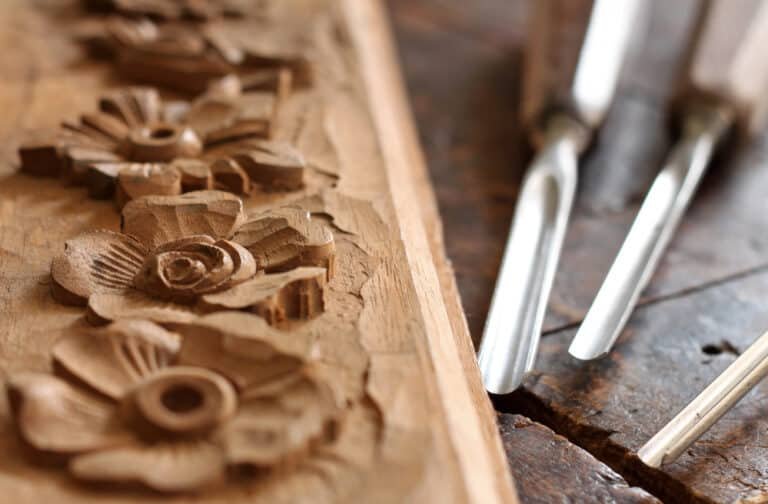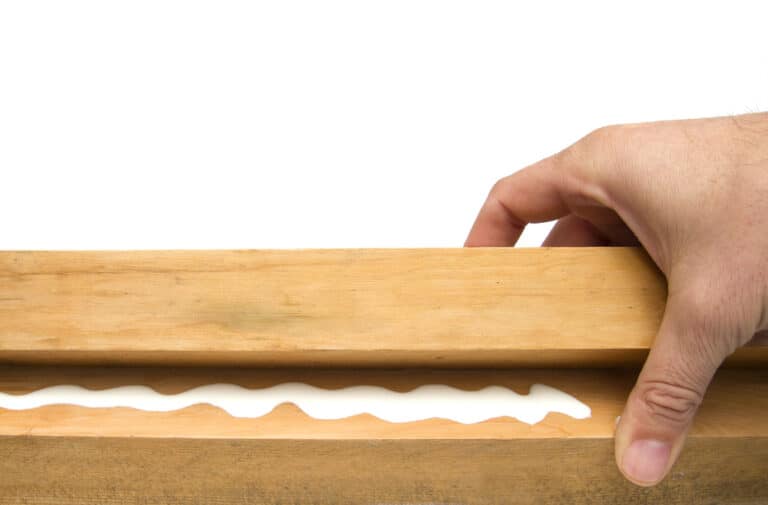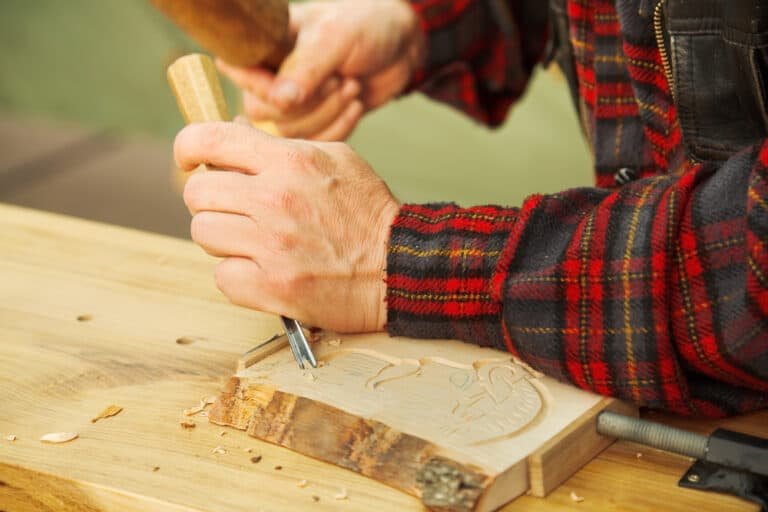
Whittling and wood carving may seem like different terms for the same craft, but the devil is indeed in the detail.
Join us as we journey through the nuanced terrain of these two fascinating practices, illuminating their key differences.
Whether you’re a seasoned crafter or a curious newcomer, this guide will help you decide which path beckons you most.
Ready to get carving or whittling? Keep reading to discover which craft will truly shape your artistic expression. Your woodwork adventure awaits!
Whittling Vs Carving: Definitions
Whittling
Whittling is a form of wood carving with a focus on using a knife to shape a piece of wood.
When you’re whittling, you’ll hold the wood in your hand and shave off small bits at a time to create your desired shape, design, or object. This often results in more simplistic projects with shallower details, but it can still produce beautiful works of art.
Wood Carving
Wood carving, on the other hand, is a broader term that encompasses various techniques, tools, and projects, including whittling as one of its forms.
When you delve into wood carving, you might use a wide range of tools such as knives, chisels, gouges, and even chainsaws for more intricate and larger projects.
The main goal of wood carving is to create an object or decorate wood. Projects often feature more intricate designs, deeper details, and finer lines than whittling.
The art of wood carving can range from small decorative items to large, elaborate sculptures, showcasing the versatility and creativity within the craft.
Tools Used in Whittling
Knives and Pocket Knives
When it comes to whittling, your primary tool will be a knife. A good whittling pocket knife should have a sharp blade with a comfortable grip.
Keep in mind that different knives may suit different projects. So you should have a few different sizes on hand. See our top recommended whittling kits here.
Tools Used in Wood Carving
Chisels, Gouges, and Mallets
Chisels and gouges are essential tools in woodcarving, used for sculpting and shaping your wood. Chisels have a flat cutting edge, while gouges have a curved one. They come in various sizes, allowing you to make precise cuts depending on your project’s requirements.
When using chisels and gouges, you’ll often require a mallet to apply force, particularly for larger woodworking tasks. Mallets come in different weights and materials, so choose one that suits your needs.
Power Tools
For more advanced woodcarving, using power tools can be a game changer. Electric tools can significantly speed up the carving process and make intricate details more manageable.
However, remember that using power tools requires extra caution to avoid injuries and often requires a well-ventilated workspace due to dust and debris.
Power tools may not be suitable for all projects, especially those requiring delicate touches or controlled cuts.
The most popular type of power carving tool is a Dremel. It allows you to carve intricate details that would be too difficult to carve with a knife. We have collated some of the top Dremel models for wood carving to make your decision easier.
Axes
Yes you read that right, axe carving is a thing. Axes can also be useful for creating a rough shape before getting into the details. See our best axes for wood carving here.
Other Wood Carving Techniques
Chip Carving
In chip carving, you create intricate patterns by removing small wood chips. This technique often uses sharp knives and chisels to achieve precise cuts.
Develop your own style by practicing various chip carving patterns, such as geometric shapes or intricate designs. Keep in mind that the end result of chip carving will often have a more delicate and detailed appearance.
Relief Carving
Relief carving involves shaping a flat piece of wood into a three-dimensional image. You’ll need to work with chisels, gouges, and other specialized tools to do this.
Focus on the depth and contours of your design to enhance the sense of realism. When you finish, your relief carving should have an eye-catching, layered texture.
Some popular themes for relief carving include:
- Nature scenes (animals, flowers, trees)
- Portraits or figures
- Abstract designs
Remember always to start shallow and work your way to deeper cuts for a smooth, well-crafted appearance.
Carving in the Round
Carving in the round refers to a method of wood sculpting where an artist crafts a scene or object that’s lifelike and three-dimensional. The resultant artwork is meant to be appreciated from any angle and is characterized by fluid, natural contours.
To do this, the carver must start with a robust block of wood that matches the size of the intended sculpture. Various tools are needed, including knives, gouges, chisels, and hammers.
The procedure for carving in the round begins with sketching out the design on all surfaces of the wooden block. The carver then proceeds to chop off the surplus wood, shaping the design further through a series of coarse and fine cuts. The last stage involves making precise cuts for detailing and texture.
Despite being widely regarded as the most challenging and expressive of all wood carving techniques, the results of carving in the round can be breathtakingly beautiful.
Power Carving
Power carving is a modern approach to woodcarving, using electric or pneumatic tools to create intricate details quickly and more efficiently. You’ll find that power carving tools can remove wood much faster than traditional hand tools, allowing you to focus more on the artistic aspects of your project.
Some favorite power carving tools include:
- Dremel rotary tools
- Die grinders
- Power chisels
Explore different attachments, such as burrs, engraving cutters, or sanding bands, to achieve diverse effects and textures in your work.
As you work with chip carving, relief carving, and power carving techniques, you’ll discover the unique styles each can offer.
Pay attention to your own preferences and take inspiration from others’ work to develop a distinctive approach that’s all your own. Remember, practice is key—keep experimenting and refining your skills to create stunning sculptures and carvings.
Creativity and Artistic Expression
Both wood carving and whittling offer unique opportunities for you to showcase your creativity. However, there are distinct differences between the two practices that may influence your choice of approach.
Wood carving allows you to create elaborate, three-dimensional objects or scenes on wood, pushing the boundaries of your creativity. Woodcarving may require more technical skills and precision.
On the other hand, whittling projects are often more simplistic and feature shallower details. However, they can still be beautiful and artistically expressive.
However, don’t be fooled by the perceived simplicity of whittling. It still demands creativity, patience, and a steady hand to shape raw wood into charming and functional objects.
So, whether it’s the complexity of woodcarving or the minimalistic approach of whittling that attracts you, both practices provide ample opportunities for you to showcase your creativity and artistic expression.


